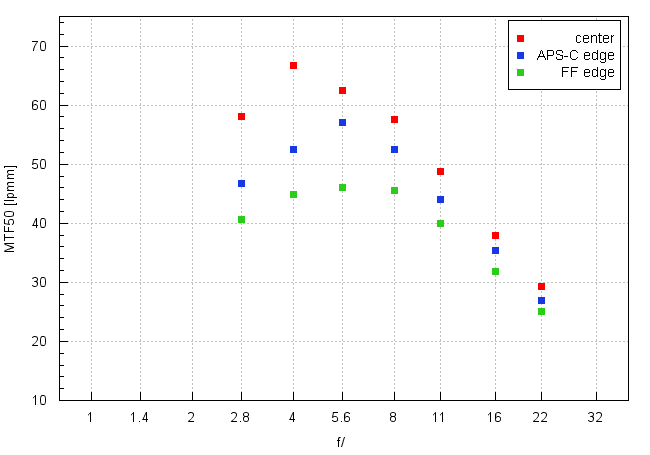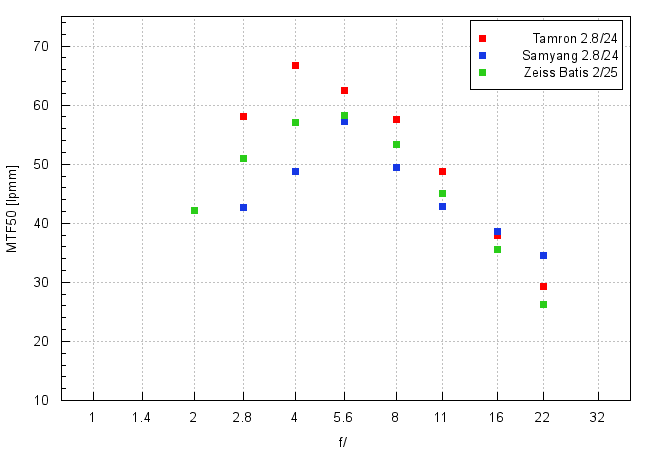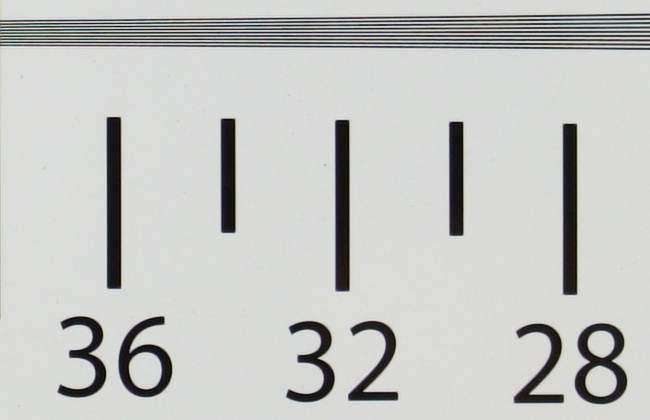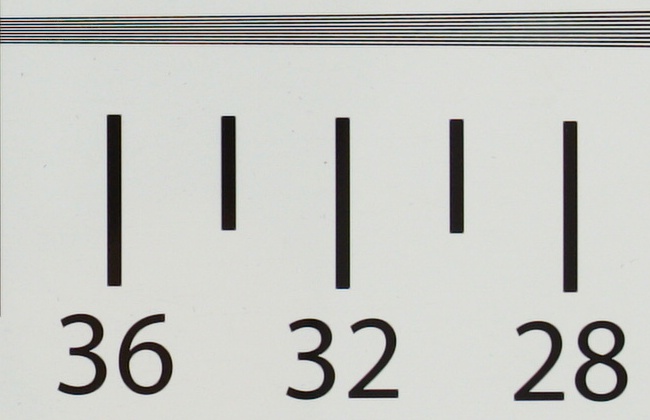Tamron 24 mm f/2.8 Di III OSD M 1:2
4. Image resolution
Let's check how the tested Tamron 24 mm f/2.8 Di III OSD M 1:2 compares – its results in the frame centre and on edges of APS-C and full frame sensors are presented below.

Please Support UsIf you enjoy our reviews and articles, and you want us to continue our work please, support our website by donating through PayPal. The funds are going to be used for paying our editorial team, renting servers, and equipping our testing studio; only that way we will be able to continue providing you interesting content for free. |
- - - - - - - - - - - - - - - - - - - - - - - - - - - - - - - - - - - - - - - - - - - - - - - -
Instead of a lengthy discussion let's consult another graph. It presents the tested Tamron's resolution results in the frame centre compared to performances of two other models with similar parameters that we've already tested on the same camera body – namely the Zeiss Batis 2/25 and the Samyang AF 24 mm f/2.8 FE.

As you can see, the Tamron beats hands down both its opponents, the noticeably more expensive and faster Batis and also the cheap Samyang. While the Samyang can be defended by its dimensions and price, in the case of the Batis there are no excuses. This lens is lucky because I tested it at the very beginning ofour Sony A7R II-based tests and, at that time, I didn't have a lot of material to compare. Now my opinion about it would be far more critical.
Returning to the Tamron – it's clear that its significant physical dimensions are used to its advantage. If a lens with parameters of a pancake is physically much bigger you should expect something extra. Here you get two extra things: very good resolution and a substitute of a macro mode. It should also be mentioned that the tested lens fares in this category better than its 2.8/20 brother.
Additionally, you should praise a good performance on the edge of the APS-C sensor and a quite sensible perfomance on the edge of full frame. Even at the maximum relative aperture the lens is able to exceed 40 lpmm so reaches the decency level. Using the Tamron you can enjoy images of good quality practically across the frame no matter what aperture you employ (of course apart from f/22 where resolution is already damped down by diffraction).
At the end of this chapter, traditionally, we present crops taken from photos of our resolution testing chart which were saved as JPEG files along with RAW files we used for the analysis above.
| A7R II, JPEG, 24 mm, f/2.8 |
 |
| A7R II, JPEG, 24 mm, f/4.0 |
 |






